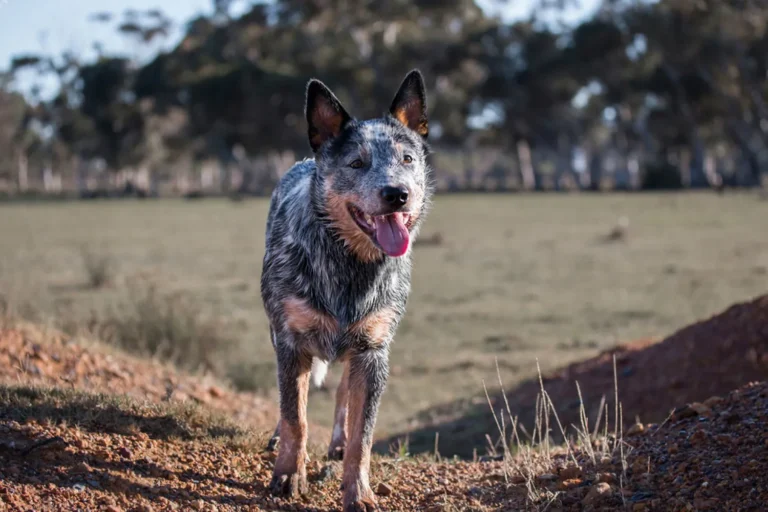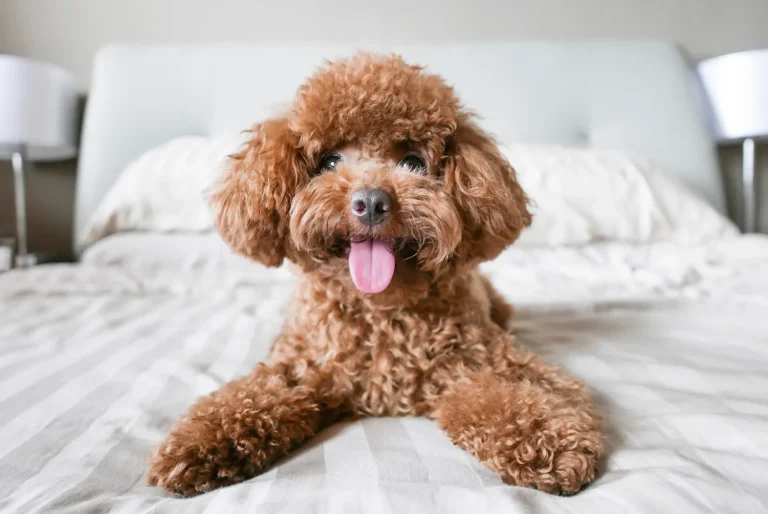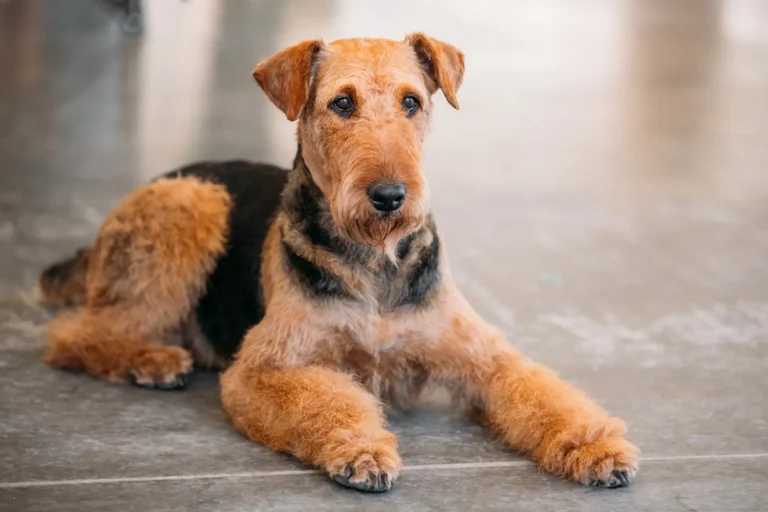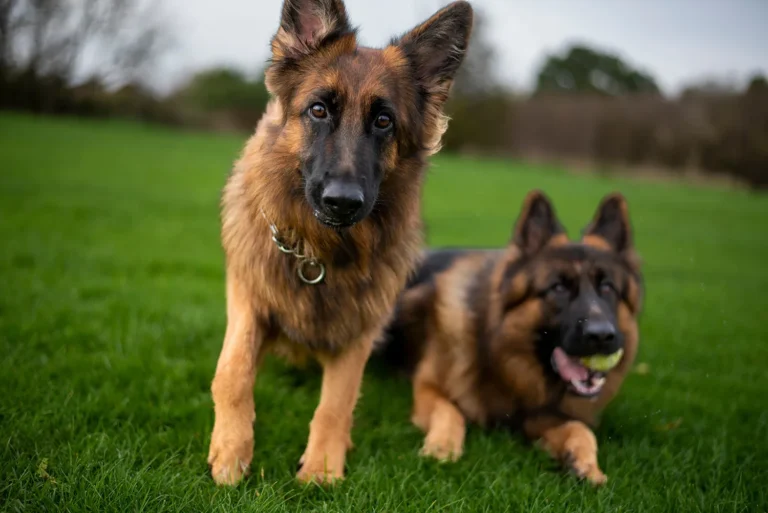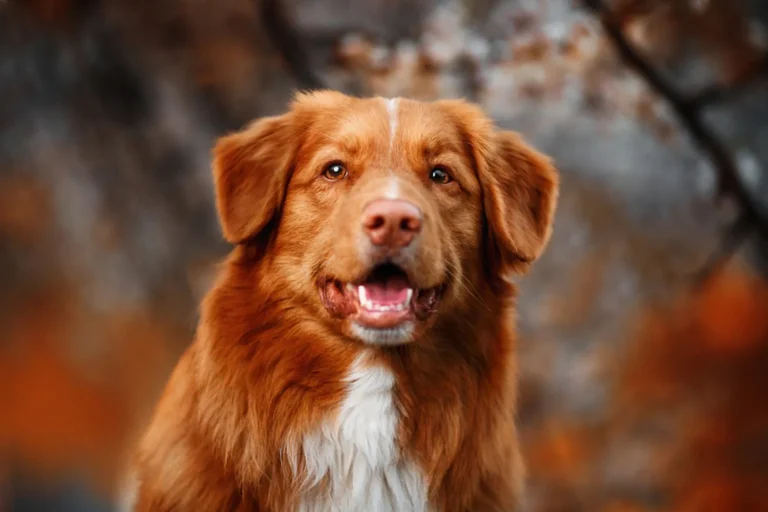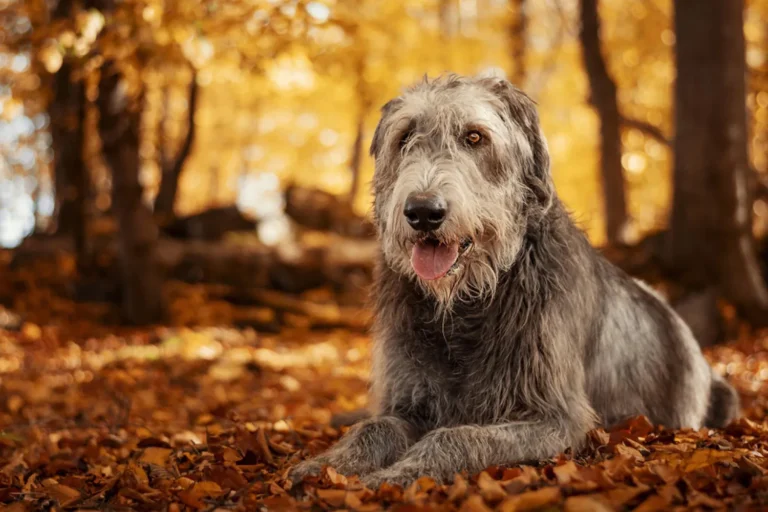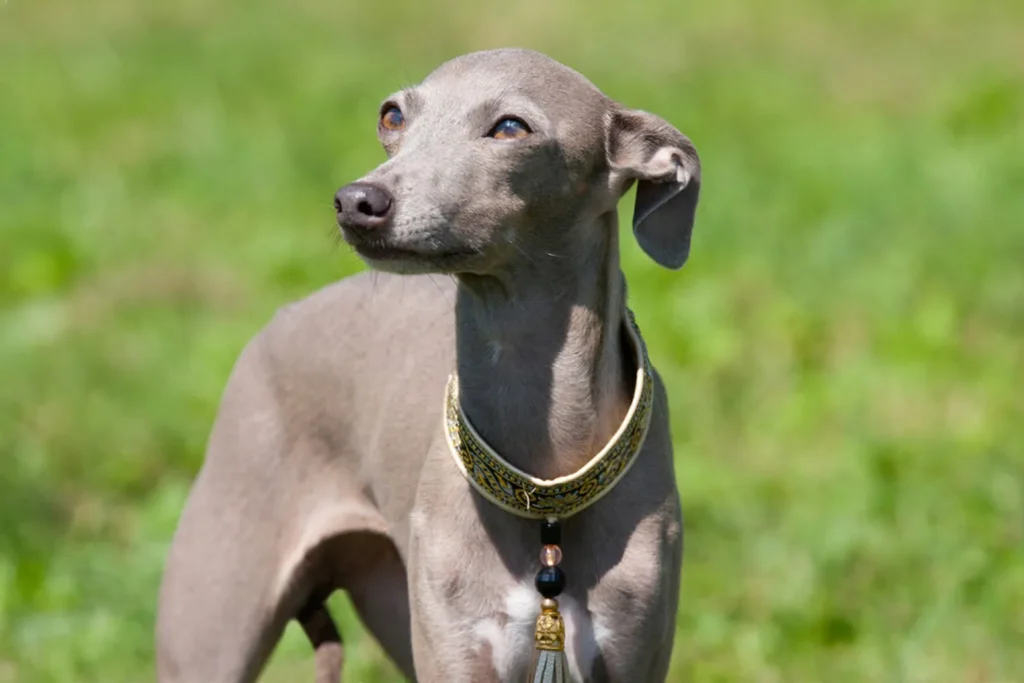
Sleek and elegant yet full of goofy charm, Italian Greyhounds have that rare mix of grace and playfulness that makes you smile without even trying. Their long history as cherished companions really shows these little aristocrats glide across the room and then fold themselves into your lap like they’ve been doing it for centuries. I still laugh remembering a friend’s Iggy doing zoomies and then instantly settling in for a cuddle as if nothing happened.
If you bring one home, expect a shadow who follows you from room to room and thinks your lap is prime real estate. Be gentle these pups are delicate and keep a cozy sweater handy on chilly days. Short play bursts, soft beds, and lots of affection go a long way with this sweet, sensitive breed.
What’s the history and origin of the Italian Greyhound?
For such a delicate little dog, the Italian Greyhound carries a surprisingly weighty passport. The smallest of the sighthound family, these graceful pups trace their roots back more than 2,000 years to the lands we now call Greece and Turkey. You can spot their ancestors in ancient decorative arts from that region, and archaeologists have unearthed small Greyhound like skeletons that match their fine boned build. The first time I saw a tiny hound sketched on a fragment of ancient pottery in a museum, I remember thinking, “Of course those elegant lines never go out of style.”
What were these early dogs doing day to day? That’s where history gets fuzzy. Some believe they were cherished as household companions, while others argue they coursed small game like rabbits. After living with a sprightly Iggy who could snag a drifting dust bunny midair and then curl up in my lap like a warm teacup, I’m convinced both theories are true. They had the instincts for the chase and the temperament for companionship a dual role that still shines through when they zoom after a squirrel and then immediately demand a blanket and a cuddle.
As centuries rolled on, Italian Greyhounds spread across Southern Europe and found their moment in the Middle Ages. Their petite size, elegance, and sweet nature made them the darlings of aristocratic households, especially in Italy hence the name that stuck. Artists couldn’t resist them either. Painters like Pisanello, Carpaccio, and Giotto captured these dogs in portraits, often nestled at their owners’ feet or looking out with those luminous eyes. I once stood in a gallery in Venice and grinned at a slender little hound painted beside a noblewoman’s silk slipper it felt like spotting an old friend across time.
By the late 1600s, the breed had arrived in Britain, and the nobility there fell just as hard. Italian Greyhounds popped up in royal circles and country estates alike, earning admirers such as James I, Princess Anne of Denmark, Queen Victoria, Charles I, and Frederick the Great of Prussia. A breeder I chatted with at a show in Surrey told me they think the breed’s popularity endured because they fit neatly into both grand drawing rooms and everyday life quiet, affectionate, and endlessly stylish without trying.
If you share your home with an Italian Greyhound today, you’re living with a little piece of living history. Their slim silhouettes echo those ancient bones, their sudden bursts of speed recall the hunt, and their fondness for laps and sunny windowsills fits perfectly with their long tradition as gentle companions. My advice? Keep a soft throw on the couch, expect an enthusiastic sprint at the sight of anything small and fast, and enjoy the feeling that your tiny friend has walked (and pranced) through centuries to get to you.
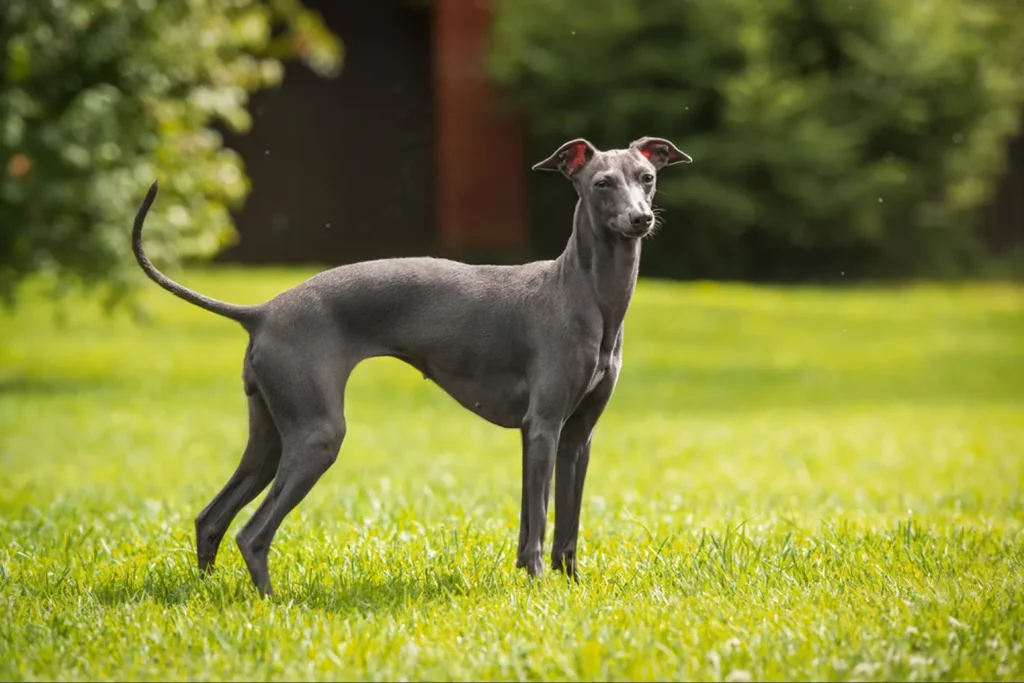
What Is an Italian Greyhound?
Imagine a Greyhound put through the delicate cycle Italian Greyhounds are like miniature versions, even more slender and fine boned, with those graceful, deer like legs and big, soulful eyes. They move like little ballerinas, all curves and light steps, and then suddenly zoom they’re gone. As much as they love to lounge and drape themselves across your lap (they absolutely live for affection), they’re still true coursing hounds at heart.
I think of mine as a cuddly little heat seeking missile. He’ll burrow into blankets, nest under my hoodie, and then, the second a squirrel flicks its tail, he’s ready to blast off. That sighthound instinct is real: sleek, light on their feet, and able to bolt at what feels like the speed of light after anything quick moving. Because of that, I keep playtime in a safely fenced area and use a leash near distractions. Recall training is very doable, but I practice it first in low distraction spaces and I never bet it against a rabbit.
Their coats come in a painter’s palette of colors white, cream, and beige, all the way to chocolate, dark bronze, and slate grey. The coat itself is whisper short and silky, and yes, shedding is minimal. Grooming is easy, but that short coat means they get chilly, so a cozy sweater on cold mornings is more than just cute. With their fine build, I avoid slippery floors and rough play, and I always cheer on those joyful living room zoomies.
If you want a dog who will curl into your lap like a warm croissant one minute and sprint like a tiny athlete the next, the Italian Greyhound is pure magic.
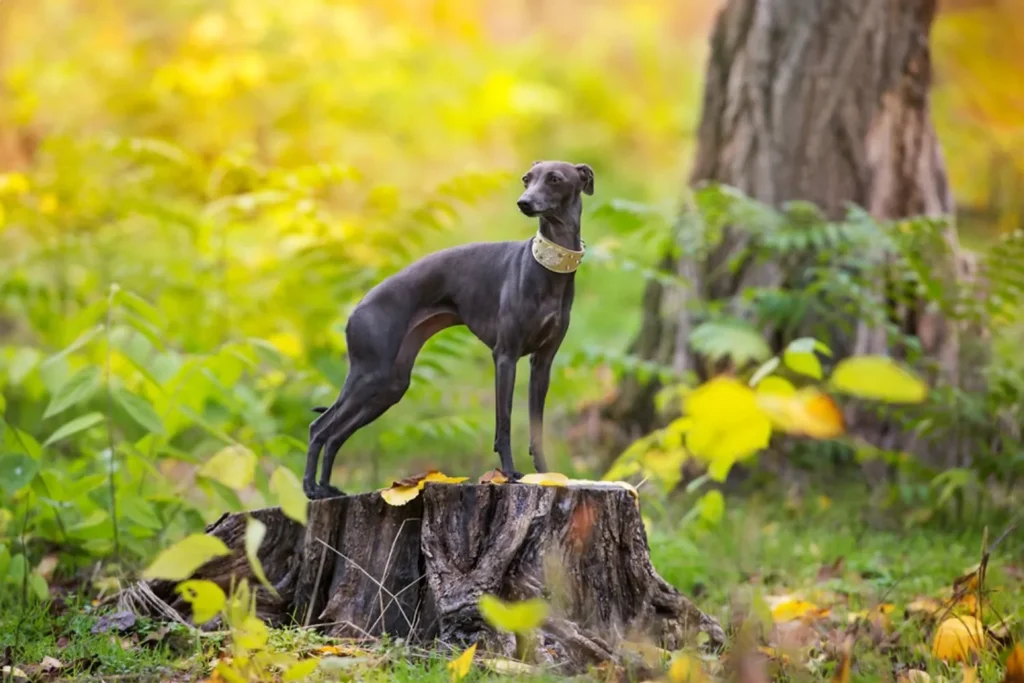
Who Is an Italian Greyhound Best For?
Most families fall in love with Italian Greyhounds for their sweet, velcro dog personalities, low maintenance grooming, and easygoing vibe in all sorts of homes. They’re gentle indoor companions who really shine in apartments, especially if there’s someone around most of the day. These little ones have sensitive hearts and don’t like being left alone for long stretches. I used to work from home with an Iggy snoozing on my lap; if I even stood up for coffee, those big eyes would track me like I’d announced a grand adventure.
They’re lovely with kids and do great with first time dog owners who can offer lots of affection. I always remind families to teach children to be soft and steady around them Italian Greyhounds have fine, delicate frames, so calm play and supervision are the name of the game. Day to day, they’re easy: light shedders, a quick brush here and there, and not much doggy odor. Keep an eye on nails and teeth, though regular trims and dental care go a long way. And because they have such thin coats, a cozy sweater isn’t just cute; it’s practical. I once met an Italian Greyhound in a tiny cable knit sweater at a New York park, trotting proudly like the mayor of the place.
Even though they’re indoor cuddle bugs, they’re happiest when you take them out for walks a few times a week. Add in short daily play sessions and you’ll see their puppy spirit never really fades. Mine loved hallway fetch and sudden zoomies around the living room, followed by a very serious nap in a sun puddle. They also adore canine company another friendly dog at home can be a huge comfort. Just keep them leashed outside; if a squirrel bolts, that sighthound chase instinct can kick in fast.
If you’re a homebody, work remotely, or have a gentle family rhythm (and maybe another pet), an Italian Greyhound can be the perfect snug as a bug companion equal parts couch buddy and playful little sprite.
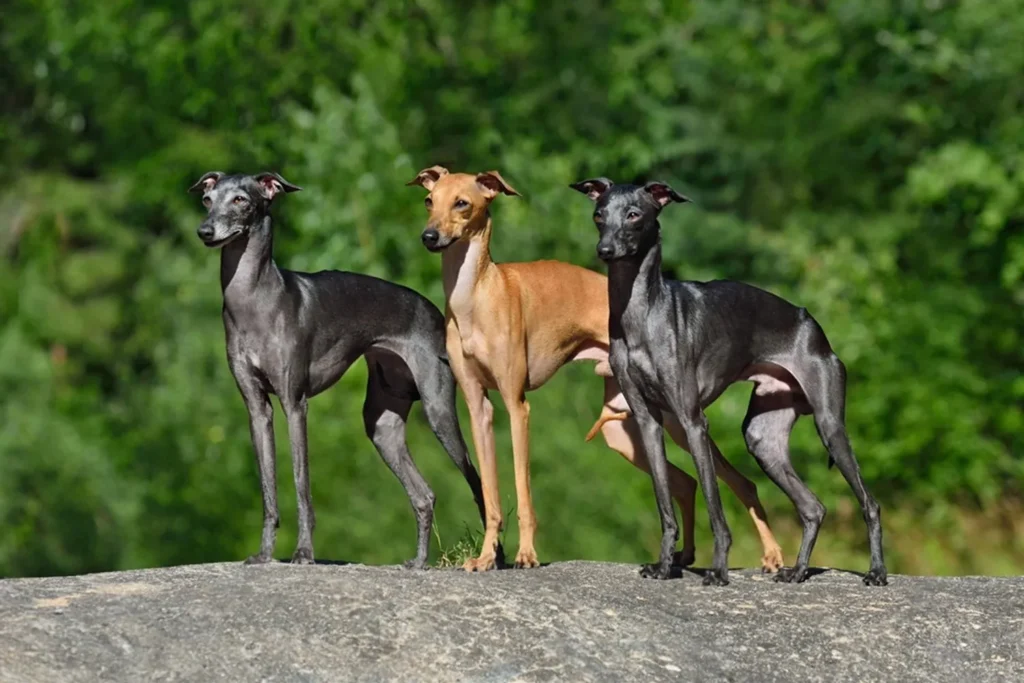
Italian Greyhound Grooming and Shedding
Italian Greyhounds are delightfully low maintenance in the grooming department. Their coat is so short and silky that you’ll barely notice the shedding no tumbleweeds of fur rolling across the floor. A quick rub with a soft grooming mitt or a microfiber cloth once or twice a week keeps them glossy and helps catch the tiny hairs before they land on your couch. I once met an IG named Luca in a city park who got “polished” with a chamois after every walk he looked like a little seal and loved the attention.
Where they’re not low maintenance is their teeth. Like many toy breeds, Italian Greyhounds can be prone to dental disease, so daily brushing is a must. Start young if you can, and use a dog safe, tasty toothpaste my friend’s IG, Pixie, only tolerated brushing after they switched to poultry flavor. Even with good home care, plan on a professional dental cleaning at the vet about once a year to keep gum issues at bay.
Baths can be occasional. Unless your pup finds a muddy puddle, a gentle bath every month or two is usually plenty. Use a mild shampoo, keep the room warm, and towel dry thoroughly these skinny little athletes get chilly fast. I like to warm a towel in the dryer and pop on a lightweight sweater after bath time; it turns the whole ordeal into a cozy ritual.
Keep an eye on nails, too. If you hear click clacks on the floor, it’s time for a trim. Weekly or biweekly trims (or a gentle grind with a nail dremel) prevent overgrowth and help the quick recede. While you’re at it, do a quick ear check and wipe nothing fancy, just a simple once over to keep everything tidy. With these easy habits, your Italian Greyhound will look and feel fabulous with very little fuss.
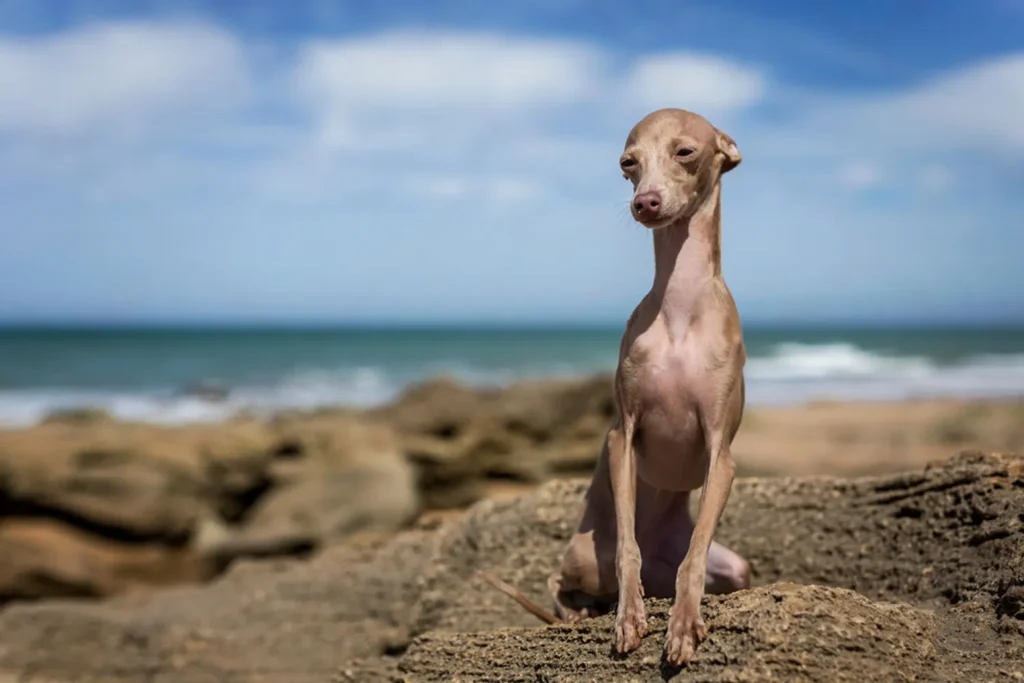
Do Italian Greyhounds bark a lot?
Italian Greyhounds may be tiny, but their voices aren’t. They tend to bark rather than yap, with a surprisingly confident “woof” for such slender little bodies. They’re naturally protective of their people and quick to announce anything unusual someone at the door, footsteps in the hallway, or that suspicious rustle outside. My Iggy, Milo, gives one sharp bark when a stranger approaches our gate, then glances back at me like, “Did you see that? I handled it.” It’s more alerting than nonstop noise, and once he knows I’ve got it covered, he settles down.
They’ll also speak up when they want your attention. If I’m late for our evening cuddle, Milo trots over, taps my knee with his paw, and lets out a single, pointed bark that clearly translates to “Excuse me, love time.” If your Iggy uses their voice to demand affection, teach a quiet cue. I like to say “thank you,” let them give two or three barks, then reward the moment they go silent. A settle mat routine helps too rewarding calm on a cozy spot so they learn there’s a way to ask without shouting.
A few practical tips: socialize them early so new people and sounds feel normal, not alarming. Manage the view if window patrol turns into constant alerts frosted film or closing a curtain at busy times works wonders. Keep greetings calm at the door, and give them jobs: sniffy walks, short sprint sessions, food puzzles, or a chew after the mail arrives. Italian Greyhounds are sensitive souls, so skip harsh scolding; it usually makes the barking worse. Instead, ignore attention seeking woofs, then praise and treat the instant they’re quiet. With a bit of guidance, they’re perfectly capable of being polite watchdogs rather than noisy neighbors.
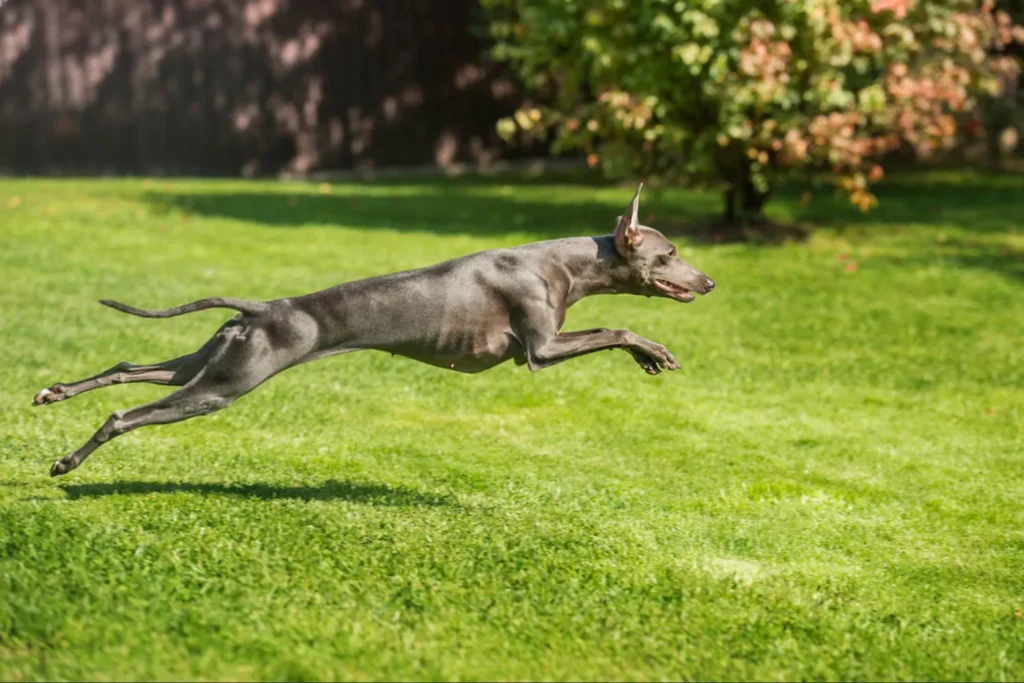
Italian Greyhound Size: Height and Weight
These dainty little gazelles pack a lot of elegance into a petite frame. Most adult Italian Greyhounds stand about 30 to 38 cm tall (roughly 12 to 15 inches) and weigh just 2.7 to 4.5 kg (around 6 to 10 pounds). Mine always looks taller than the numbers suggest those long, fine legs can make them seem like mini supermodels. I remember the first time I picked one up and thought, that’s about the weight of a bag of flour!
https://en.wikipedia.org/wiki/Italian_Greyhound
Because they’re so light, a snug harness is kinder than a collar, and it’s smart to help them down from couches to avoid any awkward landings. In cooler weather, a little sweater goes a long way for these slender bodies. Most adults fall neatly into that size range (some a touch smaller or bigger), and as long as you can feel ribs without seeing too many, you’re likely right where you should be.
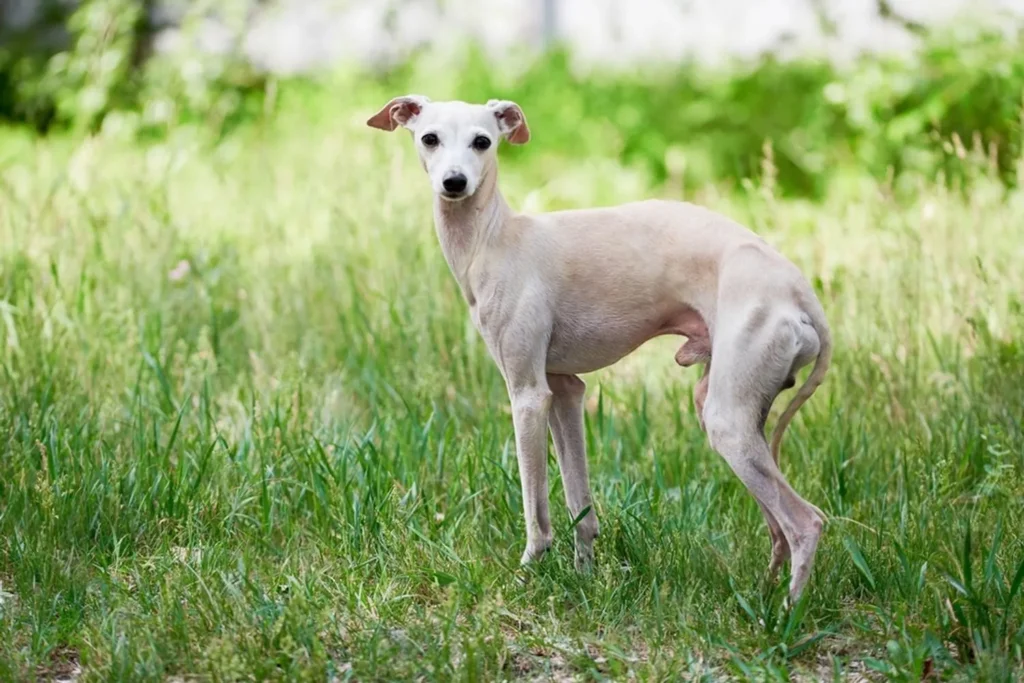
Are Italian Greyhounds easy to train?
Italian Greyhounds are bright little thinkers with big feelings, so they shine with reward based training and wilt under anything harsh. They read your tone like a book. I learned that the hard way the day I sighed too loudly my Iggy tucked her tail and the lesson was over. The very next session, I whispered my cues, clicked the moment she got it right, and paid with tiny treats. She lit up and started offering the behavior like it was her idea. That’s the magic combo for this breed: clear, calm cues, quick rewards, and praise that feels like a mini celebration.
Good trainers stay firm about what the cue means but generous with feedback. Ask once, then immediately mark and reward when your dog tries. Think pea sized treats and big, happy praise right when the command is followed. Keep sessions short three to five minutes, a few times a day and end on a win. I like to teach “touch” and “go to mat” early; both build confidence and give you handy tools for real life, like settling at a café or greeting guests politely.
Start socialization and basic manners as soon as you bring your pup home. Invite friends over in twos and threes, visit busier parks during quieter hours at first, and take relaxed strolls through different neighborhoods. Bring treats so you can reward calm curiosity around bikes, skateboards, and flapping flags. Italian Greyhounds can be a little stubborn, but they’re sensitive souls, and heavy handed methods backfire fast. Keep things light, be patient, and celebrate small steps. One time my friend’s Iggy refused to “sit” on wet grass so we practiced on a dry mat, then gradually moved the mat away. Five minutes later, she sat on the lawn like a pro. With gentleness and good timing, this breed learns beautifully.
How Do Italian Greyhounds Behave? Temperament and Personality
Italian Greyhounds are little bundles of grace wrapped around a big, affectionate heart. They’re smart and playful, but also wonderfully sensitive and alert to everything happening around them. If you love a dog who wants to be part of your day, every day, this is your shadow. Mine likes to curl into a perfect donut under a blanket and follow me from room to room like I’m the most interesting thing on earth. They’re champion snugglers, too true lap warmers who will happily spend a rainy afternoon tucked against your side.
That sensitivity makes them surprisingly in tune with your mood. Speak softly, and an Italian Greyhound will bloom; raise your voice, and you might see those big eyes widen. Training goes best with gentle, positive methods and short, fun sessions. I once helped a friend teach her IG the “touch” cue using a bit of chicken, and the dog picked it up in minutes then pranced around the living room like she’d won an award. They love brain games and will delight you with how quickly they figure things out.
Around strangers, many Italian Greyhounds are a touch shy or reserved, especially if they didn’t get lots of early socialization. It’s not that they’re unfriendly; they just prefer to meet the world at their own pace. Slow introductions work wonders. I like to let new people sit sideways, offer a treat, and let the dog approach when ready. Puppy classes, quiet café patios, and short visits to different environments all help them build confidence. One Sunday at our neighborhood market, we parked ourselves on a bench with a pocket of tiny treats and let curious folks say hello from a respectful distance by the end, the little IG was greeting people with a hesitant tail wag and bright eyes.
As family dogs, they’re wonderfully adaptable. Apartment, townhouse, or a home with a yard they’re content as long as they’re with their people. They don’t need endless exercise, but they do enjoy sprinty zoomies and brisk walks, followed by a long nap in a sunbeam. Because of their slim build and short coat, they feel the weather more than most. I keep a fleece by the door for chilly mornings and a light tee for breezy evenings problem solved, and they strut like runway models.
With kids, they tend to be sweet and gentle, but they are delicate. Teach children to be calm and careful, and supervise play so those slender legs stay safe. Outside, keep them leashed or in a secure yard like all sighthounds, they can spot a squirrel from a block away and forget their manners. They thrive on company, so if you’re gone long hours, consider a midday visitor, puzzle toys, or a comfy crate den to help them relax. A breeder I spoke with in California told me her IGs are happiest when they have a routine: breakfast, stroll, nap, play, cuddle, repeat.
In short, Italian Greyhounds are loving, loyal companions who slide beautifully into family life. Give them warmth, kindness, and a soft place to land right next to you and they’ll give you affection in spades.
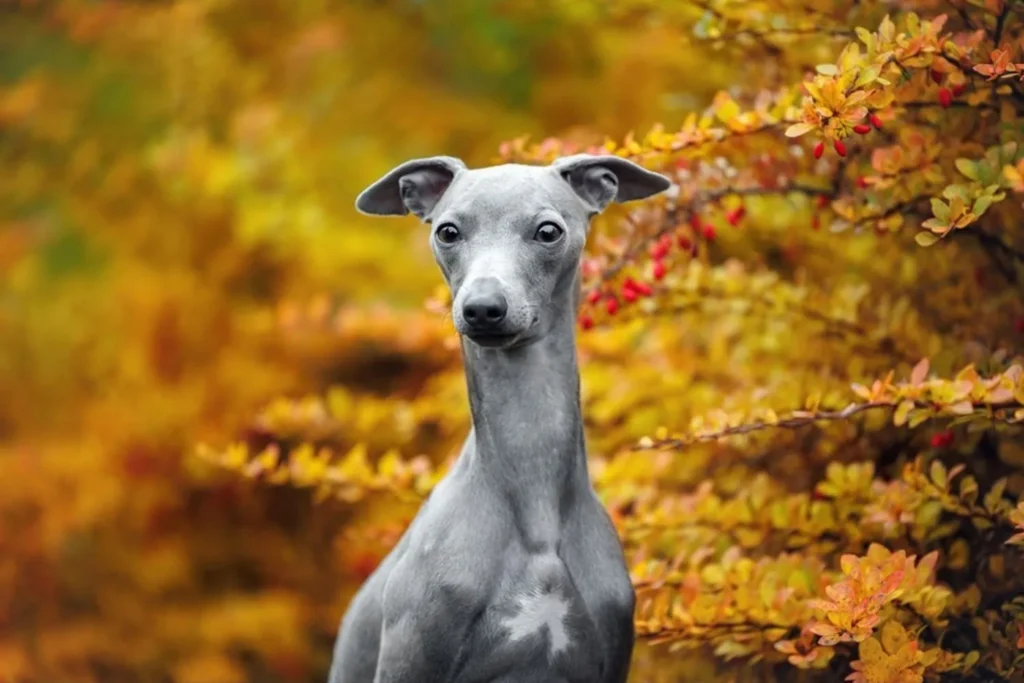
Do Italian Greyhounds Have Common Health Issues?
Italian Greyhounds are generally healthy little sprinters with lovely long lifespans, but I always say: hope for the best, screen for the rest. A bit of proactive care goes a long way.
One thing to watch for is PRA (progressive retinal atrophy), where vision slowly fades, often starting with night blindness. If your IG starts hesitating in dim light or bumping into furniture at dusk, it’s worth booking an ophthalmologist exam. I got in the habit of annual eye checks once my dog hit middle age, and it gave me so much peace of mind.
Autoimmune conditions can pop up in subtle ways skin flare ups, low energy, odd bloodwork so routine checkups and baseline lab tests are your friend. My friend’s IG, Luna, had a weird bout of fatigue that turned out to be an immune related issue; catching it early made treatment straightforward.
Legg Calve Perthes disease affects the hip in young, small breeds. You might notice a sudden limp, difficulty jumping, or pain when you touch the hip. Early diagnosis matters, and sometimes surgery plus rehab gets them back to their zoomies. I once fostered a tiny sighthound who slipped on hardwood; after that, rugs became our best friends.
Hypothyroidism is another one to keep an eye on think weight gain, a dull coat, and seeking out warm spots. It’s usually very manageable with daily medication and periodic thyroid tests.
Recommended Health Tests from the National Breed Club:
– Patella evaluation (to check kneecap stability)
– Hip evaluation (to catch issues like Legg Calve Perthes)
– Ophthalmologist evaluation (for PRA and other eye concerns)
– Thyroid evaluation (for hormone balance)
A few practical tips: keep them lean to protect joints, use rugs or runners on slippery floors, and skip high impact jumps. Ask breeders or rescues for health clearances and consider pet insurance before you need it. With smart screening and a little extra care, most Italian Greyhounds stay zippy, cuddly, and wonderfully goofy for many years.
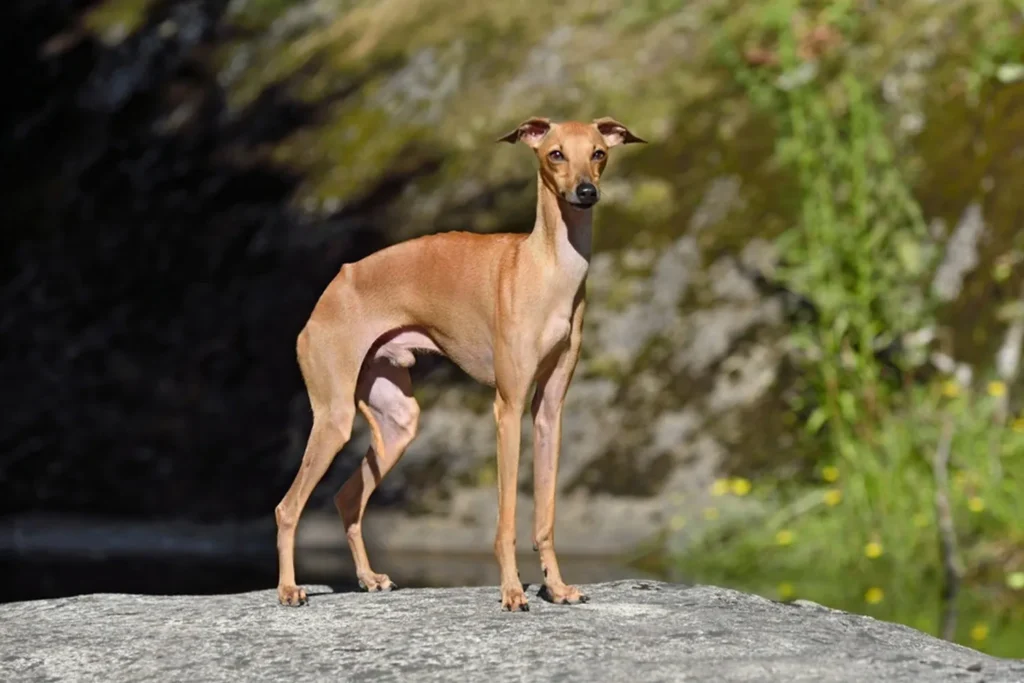
What Is the Lifespan of an Italian Greyhound?
Italian Greyhounds are wonderfully long lived little companions. Most happily reach 13 to 15 years, and plenty keep going to 18 and beyond. What always amazes me is how puppyish they stay light on their feet, eager to dash after a sunbeam, and ready for a cuddle marathon at the drop of a blanket. My neighbor’s IG, Lila, turned 17 and still had a daily case of the zoomies; I used to dog sit a tiny gentleman named Pip who celebrated his 16th birthday in a paper party hat and insisted on one more game of fetch before cake.
If you want yours to thrive well into their teens, a few habits make a big difference. Keep them slim and spry with gentle daily exercise short brisk walks and a safe space to sprint. Protect those delicate legs by managing stairs and avoiding rough play with much larger dogs. Dental care is huge for this breed; a quick brush and regular cleanings can add comfort to their golden years. They run chilly, so a cozy sweater in winter and a soft, supportive bed are musts. And of course, routine vet checkups and a bit of brain work snuffle mats, simple tricks help them stay bright and happy. With a little care, an Italian Greyhound’s long life is full of sparkle.
How much should an Italian Greyhound eat?
Italian Greyhounds do best on high-quality food, whether that’s a trusted commercial brand or a balanced, vet approved homemade recipe. With these little athletes, the trick isn’t usually finding what they’ll eat it’s making sure we don’t love them a little too much with the scoop. They’re small and sleek, and extra calories show up fast. I learned that the hard way one winter when my Iggy, Pippa, got a few extra “just because” treats. Two weeks later, her elegant waist started to blur, and we had to dial things back.
Portion control is your best friend. Measure meals with a proper scoop or, better yet, a kitchen scale so portions don’t creep up. I like splitting food into two or three small meals a day; it keeps them satisfied and helps prevent “I’m starving” theatrics at dinner. Don’t forget to count treats as part of the daily total training snacks add up quickly. I keep a little bag of tiny, low calorie treats or break bigger ones into crumb sized bits. On rainy days when we’re less active, I shave the portion slightly; on hiking weekends, I might add a touch more. Slow feed bowls or puzzle toys can also help if your pup tends to inhale their meals.
Let their body be your guide. At a healthy weight, you should be able to feel the ribs easily under the skin without seeing them sharply, and the hip bones should be just barely visible. Look from above for a gentle hourglass waist, and from the side for a nice tummy tuck. If everything’s looking a bit too rounded, trim the portion by a small amount and reassess in a week or two. I do quick weigh ins at home every couple of weeks and a more official check at the vet. It’s amazing how a half ounce here and there makes a difference with such a slender breed.
As always, talk with your vet about the best diet and amount for your Italian Greyhound’s age, activity level, and health. Puppies usually need more frequent meals, seniors may do better with gentler formulas, and if you’re going the homemade route, make sure the recipe is balanced for all the nutrients they need. The goal is simple: keep that graceful figure lean and strong so your Iggy can zoom, snuggle, and live a long, happy life by your side.
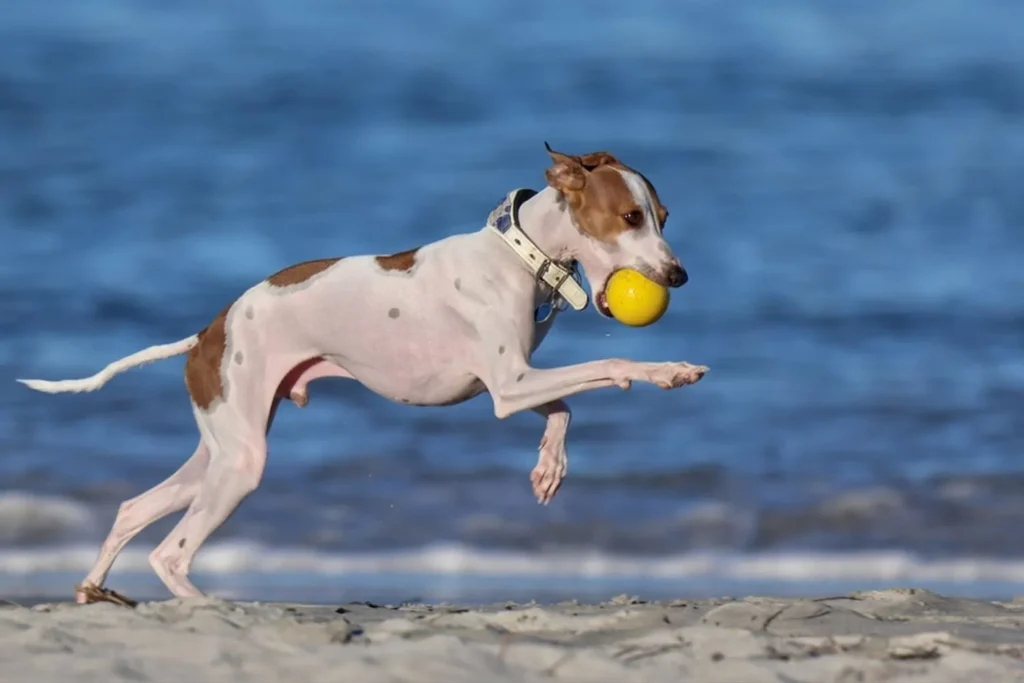
Italian Greyhound FAQs
Is an Italian Greyhound ideal for a first time dog owner?
If you’re new to dogs, an Italian Greyhound can be a lovely, low fuss companion. They don’t need marathon runs or a giant yard; a few playful zoomies and a gentle daily walk usually do the trick. I’ve watched my friend’s Iggy get all her wiggles out chasing a soft toy in the living room, then spend the rest of the afternoon tucked under a blanket like a little burrito. Their small size makes them easier to handle than big, bouncy breeds, and they adapt beautifully to apartment life. As long as you have a bit of spare time for cuddles and companionship, they’re wonderfully manageable. They can be great for seniors and for households with small children too just teach kids to be gentle, because those slender legs are delicate. Quiet routine, a cozy bed, and a warm sweater on chilly days, and you’ll both be happy.
Do Italian Greyhounds suffer from separation anxiety?
This is a very social, sensitive breed, so long stretches alone are tough on them. If you’re out all day, consider a second dog for company or plan for a midday visitor. When I dog sat an Iggy named Pesto, I learned the value of short practice departures: slip out for a few minutes, come back calmly, and build up the time little by little. Leave a worn T shirt that smells like you, offer a safe chew, and set up a comfy crate or pen so they feel secure. Doggy daycare a couple times a week can help too. With a thoughtful routine, they settle far better than if they’re just left to worry.
Are Italian Greyhounds hypoallergenic dogs?
Many allergy sufferers do really well with Italian Greyhounds. Their sleek, short coat sheds very lightly, which often means fewer sniffles and less cleaning. Still, everyone’s sensitivity is different. Before you commit, spend an afternoon with an Iggy visit a breeder, rescue, or a friend and see how you feel. I once invited a sniffly neighbor to meet an Iggy on my porch; after an hour of gentle pets and no sneezes, she was sold. Keeping bedding washed and running a small air purifier can make life even more comfortable.
Will an Italian Greyhound need professional grooming?
They’re blissfully low maintenance. A quick wipe down after walks and an occasional bath will keep that satiny coat looking lovely unless they’ve discovered a fresh mud puddle, in which case, straight to the tub! Odor issues are rare. Nails, however, grow fast on these dainty feet, so plan on weekly trims to keep them comfortable and prevent slips. Dental care is important too: aim to brush teeth at least twice a week, and more often if you can. A soft brush, tasty dog toothpaste, a few treats, and it becomes a two minute routine. I also like to do a brief “spa check” on Sundays peek at ears, wipe eye corners, and make sure those tiny toes are in good shape. It’s simple, quick, and keeps your little shadow feeling their best.
Disclaimer:
This article is for informational purposes only and doesn’t replace professional veterinary or training advice. Always consult a certified vet or dog trainer for guidance specific to your pup.
